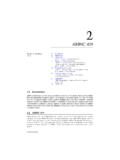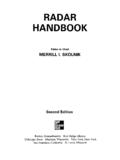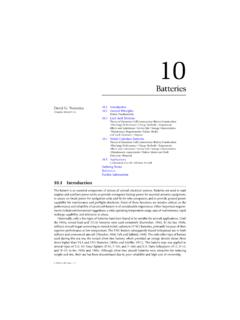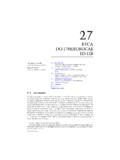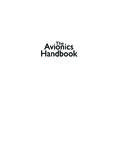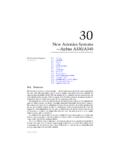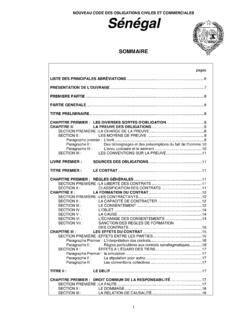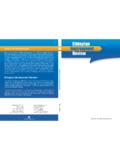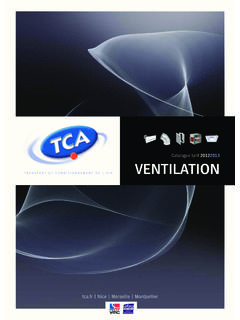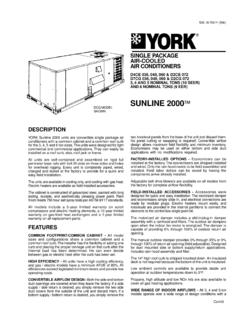Transcription of Boeing B-777: Fly-By- Wire Flight Controls
1 11. Boeing B-777: Fly-By- wire Flight Controls Gregg F. Bartley Introduction Boeing System Overview Design Philosophy System Architecture Flight Deck Controls System Electronics ARINC 629. Data Bus Interface to Other Airplane Systems Electrical Power control Surface Actuation Fly-By- wire Actuation Mechanical control Fault Tolerance System Operating Modes control Laws and System Functionality Pitch control Yaw control Roll control 757 Test Bed Actuator Force- Flight Elimination Primary Flight Controls System Displays and Annunciations System Maintenance Central Maintenance Computer Line Replaceable Units Component Adjustment Summary Defining Terms Introduction Fly-By- wire (FBW) Primary Flight Controls have been been used in military applications such as fighter airplanes for a number of years.
2 It has been a rather recent development to employ them in a commercial transport application. The 777 is the first commercial transport manufactured by Boeing which employees a FBW Primary Flight control System. This chapter will examine a FBW Primary Flight control System using the specific system on the 777 as an example. It must be kept in mind while reading this chapter that this is only a single example of what is currently in service in the airline industry. There are several other airplanes in commercial service made by other manufacturers that employ a different architecture for their FBW Flight control system than described here. A FBW Flight control system has several advantages over a mechanical system.
3 These include: Overall reduction in airframe weight. Integration of several federated systems into a single system. Superior airplane handling characteristics. Ease of maintenance. 2001 by CRC Press LLC. Ease of manufacture. Greater flexibility for including new functionality or changes after initial design and production. System Overview Conventional primary Flight Controls systems employ hydraulic actuators and control valves controlled by cables that are driven by the pilot Controls . These cables run the length of the airframe from the cockpit area to the surfaces to be controlled. This type of system, while providing full airplane control over the entire Flight regime, does have some distinct drawbacks.
4 The cable-controlled system comes with a weight penalty due to the long cable runs, pulleys, brackets, and supports needed. The system requires periodic maintenance, such as lubrication and adjustments due to cable stretch over time. In addition, systems such as the yaw damper that provide enhanced control of the Flight control surfaces require dedicated actuation, wiring, and electronic controllers. This adds to the overall system weight and increases the number of components in the system. FIGURE The Primary Flight control System on the Boeing 777 is comprised of the outboard ailerons, flaperons, elevator, rudder, horizontal stabilizer, and the spoiler/speedbrakes. In a FBW Flight control system, the cable control of the primary Flight control surfaces has been removed.
5 Rather, the actuators are controlled electrically. At the heart of the FBW system are electronic computers. These computers convert electrical signals sent from position transducers attached to the pilot Controls into commands that are transmitted to the actuators. Because of these changes to the system, the following design features have been made possible: Full-time surface control utilizing advanced control laws. The aerodynamic surfaces of the 777. have been sized to afford the required airplane response during critical Flight conditions. The reaction time of the control laws is much faster than that of an alert pilot. Therefore, the size of the Flight control surfaces could be made smaller than those required for a conventionally con- trolled airplane.
6 This results in an overall reduction in the weight of the system. Retention of the desirable Flight control characteristics of a conventionally controlled system and the removal of the undesirable characteristics. This aspect is discussed further in the section on control laws and system functionality. Integration of functions such as the yaw damper into the basic surface control . This allows the separate components normally used for these functions to be removed. Improved system reliability and maintainability. 2001 by CRC Press LLC. Design Philosophy The philosophy employed during the design of the 777 Primary Flight control System maintains a system operation that is consistent with a pilot's past training and experience.
7 What is meant by this is that however different the actual system architecture is from previous Boeing airplanes, the presen- tation to the pilot is that of a conventionally controlled mechanical system. The 777 retains the conventional control column, wheel, and rudder pedals, whose operation are identical to the Controls employed on other Boeing transport aircraft. The Flight deck Controls of the 777 are very similar to those of the Boeing 747-400, which employs a traditional mechanically controlled Primary Flight control System. Because the system is controlled electronically, there is an opportunity to include system control augmentation and envelope protection features that would have been difficult to provide in a conventional mechanical system.
8 The 777 Primary Flight control System has made full use of the capabilities of this architecture by including such features as: Bank angle protection Turn compensation Stall and overspeed protection Pitch control and stability augmentation Thrust asymmetry compensation More will be said of these specific features later. What should be noted, however, is that none of these features limit the action of the pilot. The 777 design utilizes envelope protection in all of its functionality rather than envelope limiting. Envelope protection deters pilot inputs from exceeding certain predefined limits but does not prohibit it. Envelope limiting prevents the pilot from commanding the airplane beyond set limits.
9 For example, the 777 bank angle protection feature will significantly increase the wheel force a pilot encounters when attempting to roll the airplane past a predefined bank angle. This acts as a prompt to the pilot that the airplane is approaching the bank angle limit. However, if deemed necessary, the pilot may override this protection by exerting a greater force on the wheel than is being exerted by the backdrive actuator. The intent is to inform the pilot that the command being given would put the airplane outside of its normal operating envelope, but the ability to do so is not precluded. This concept is central to the design philosophy of the 777 Primary Flight control System.
10 System Architecture Flight Deck Controls As noted previously, the 777 Flight deck utilizes standard Flight deck Controls ; a control column, wheel, and rudder pedals that are mechanically linked between the Captain's and First Officer's Controls . This precludes any conflicting input between the Captain and First Officer into the Primary Flight control System. Instead of the pilot Controls driving quadrants and cables, as in a conventional system, they are attached to electrical transducers that convert mechanical displacement into electrical signals. A gradient control actuator is attached to the two control column feel units. These units provide the tactile feel of the control column by proportionally increasing the amount of force the pilot experiences during a maneuver with an increase in airspeed.

